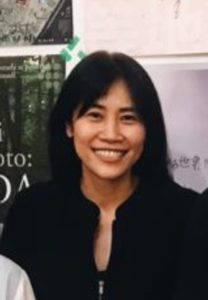Written by: Tan Hong Kheng, Singapore
As TSM has become one of my main practice therapy models for my clinical work, case recording was a challenge. I thought of a way I can maintain a record that not only contains my work done in session, but is also a way for better tracking my client’s progress and follow up. Thus I’ve wanted to modify the existing format expecting to meet my new expanding needs, but it doesn’t.
My thoughts keep escalating and growing—-somehow things doesn’t work out accordingly. Then an idea pops in at the time I’m stuck with a C-PTSD client that I need advice from my supervisor on (Dr. Kate Hudgins). Why not TSM clinical map I asked myself with a sense of excitement!
So, I started by “deconstructing” the existing structure of the TSM clinical map.
Initially, I add only those elements which I realized might contributed to the accuracy of my overall assessment such as major events, medical history, medication, stressor and triggers. Somehow, it’s like something still missing. On second review, “making contract” (goal – types of drama) came right into my mind. Then I took an effort to go through again the seminal book on TSM (Experiential Treatment for PTSD: The Therapeutic Spiral Model by Kate Hudgins 2002). Eventually, I managed to extract a few more essential elements that patched up the “missing piece”. “The stages of change” was the last piece that I intentionally included in to serve a reminder for counsellor/therapist to be mindful of our client’s pacing and where they are in their healing process. It also aligns with TSM’s value of enhancing safety space for healing.
After some final fine tuning, I took courage to presented it on one of my supervision sessions with Dr. Kate. The effort I’ve put in was acknowledge and affirmed. Here is what I created and now offer to you.

This template/diagram was then translated into Chinese to meet the need for China Supervision Group as Dr. Kate suggested, where I was provided with a practicum site as AL.
After the completion of 5 sessions, they have given much positive feedback and shared that the whole process of supervision which has stimulated their interest of learning TSM further. Indeed, a very inspiring and reassuring experience for me as well.
My take away from the experience was, firstly, it’s another good way to“concretize and tangibly present” (Hudgins, 2002) the missing of actual/physical TSM Drama work that limited by online setting. Secondly, the diagram provides beginners with a comprehensive yet simplified version of TSM Clinical Map. Thirdly, as a learning material, trainees can use it as a route track on their own learning journey as well as client’s progress. During the China Supervision Group, homework was given at the end of each session in order to enhance their learning and understanding, such as to identify specific strengths and roles then fill in accordingly. Lastly, I’m truly happy that the template/diagram serves it purpose well and am glad to share a token of what I’ve benefited from my learning journey to be TSM Practitioner.

Tan Hong Kheng
Care Corner Counselling Centre
Counsellor
Singapore
*Hudgins, M. K. (2002). Experiential Treatment for PTSD – The Therapeutic Spiral Model
All psychodramatic techniques have the goal of making the client’s internal reality overly visible both to self and others. That is, psychodramatic techniques concretize and tangibly present all aspects of the client’s internal experience, both verbal and nonverbal, for the purpose of increased awareness, exploration and change. (p.32)
